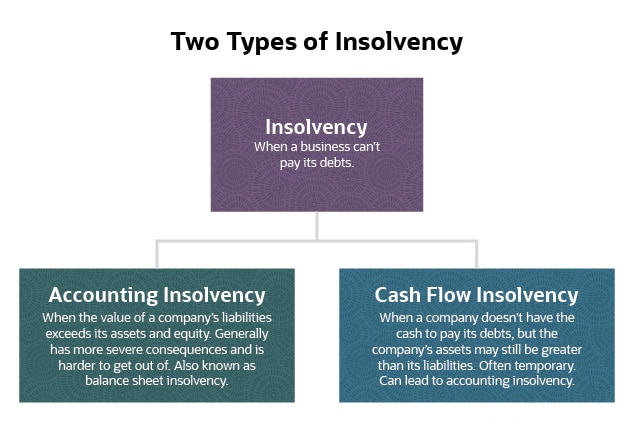Not known Details About Insolvency Practitioner
Not known Details About Insolvency Practitioner
Blog Article
The 7-Second Trick For Insolvency Practitioner
Table of ContentsThe Only Guide for Insolvency PractitionerRumored Buzz on Insolvency PractitionerThe Main Principles Of Insolvency Practitioner What Does Insolvency Practitioner Do?The Only Guide for Insolvency PractitionerGetting The Insolvency Practitioner To WorkTop Guidelines Of Insolvency Practitioner
Insurance policy is monitored and managed by state insurance departments, and one of their key goals is shielding insurance holders from the danger of a business in financial distress. When a business enters a duration of financial difficulty and is unable to fulfill its obligations, the insurance coverage commissioner in the company's home state initiates a processdictated by the regulations of the statewhereby efforts are made to aid the business regain its monetary ground.If it is figured out that the company can not be fixed up, the company is proclaimed bankrupt, and the commissioner will ask the state court to order the liquidation of the firm. The insurance policy commissioner, either selected by the guv or chosen, heads the state insurance division and screens and controls insurance policy activity within the state.
[Back] By obtaining control of a firm, the commissioner (or the insurance policy division) is, by law, the rehabilitator or liquidator of the firm. In this capability, the commissioner or department takes control of the firm's operations. As opposed to do so straight, the commissioner may maintain an unique deputy receiver to manage the firm's tasks.
All about Insolvency Practitioner
The receiver oversees an audit of the firm's assets and obligations and administers the estate of the company. In doing so, the receiver seeks to make best use of the company's possessions, move them to cash money, and afterwards disperse that money to financial institutions having legitimate insurance claims versus the insurer based on settlement top priorities defined by state regulation (in all states, insurance policy holders are priority complaintants whose insurance claims are paid prior to those of general financial institutions).
All insurance firms (with restricted exceptions) accredited to offer life or health insurance or annuities in a state need to be participants of that state's guaranty association. The warranty association coordinates with the commissioner and the receiver in pre-liquidation preparation. Insolvency Practitioner. Once the liquidation is gotten, the warranty organization offers protection to the firm's policyholders that are state citizens (approximately the levels defined by state lawssee below; any kind of benefit quantities above the warranty asociation advantage degrees become cases versus the company's staying properties)

A Biased View of Insolvency Practitioner
Second, insurers doing site service in that state are assessed a share of the quantity called for to fulfill the portion of the guaranty organizations' covered cases not otherwise funded with estate possessions. The amount insurance providers are assessed is based on the amount of premiums that they accumulate in that state. The National Company of Life and Wellness Insurance Policy Warranty Associations (NOLHGA) is made up of the life and health insurance coverage warranty organizations of all 50 states and the District of Columbia.
NOLHGA establishes a job pressure of depictive warranty associations to collaborate with the insurance policy commissioner to develop a plan to protect policyholders. To find out more on NOLHGA's duty while doing so, see "What Is NOLHGA?" and "The Safety And Security Net at the workplace." [Back]
You are below: Insolvency is when a firm or individual can not pay financial debts when they schedule. There are several alternatives readily available to an insolvent firm or individual: ASIC regulates companies, it does not handle personal insolvency treatments. To find out more regarding personal bankruptcy and individual insolvency contracts, see the Australian Financial Security Authority website.
Getting The Insolvency Practitioner To Work
Anticipating defense by helping you choose the ideal consumers and the appropriate markets to stay clear of poor debt to begin with, many thanks to acute monetary analysis. Extensive market intelligence, giving you with 360-degree presence on organization fields and foreshadowing troubles. It would certainly be a simplification to believe a trade credit scores insurance starts and ends with costs and pay-outs.
This can occur for a number of reasons, including bad financial monitoring, unexpected costs, or a change on the market. If a company is insolvent, it might be required to close down or liquidate assets to pay creditors. This can have a significant influence on business, staff members, and shareholders.
Why does a business get in into insolvency? There are a number of reasons why a company might get in into bankruptcy.
The Basic Principles Of Insolvency Practitioner
Other reasons for insolvency include fraud, mismanagement, and unexpected costs. When a firm becomes financially troubled, its possessions are used to settle its financial obligations. This can have a significant impact on the organization, as it might no more have the ability to continue operating. Insolvency can likewise result in work losses and the closure of services.
This can have severe effects for the business, its stakeholders, financial institutions and the economic climate. The company may be forced to offer properties, lay off personnel or even shut down. This can have a ripple effect on the local area and the economic situation as a whole. Lenders might be neglected of pocket and the firm's shareholders may see their investment go away.
Some Of Insolvency Practitioner
This can occur for helpful site a number of factors, consisting of inadequate economic management, unanticipated costs, or an adjustment in the market. If a firm is insolvent, it may be required to close down or liquidate properties to pay financial institutions. This can have a significant influence on business, workers, and shareholders.

Various other reasons for insolvency consist of fraud, mismanagement, and unexpected prices. Insolvency can likewise lead to work losses and the closure of companies.
The Single Strategy To Use For Insolvency Practitioner
The business may be forced to sell possessions, lay off personnel or even close down. Creditors might be left out official website of pocket and the company's investors might see their investment disappear.
Report this page